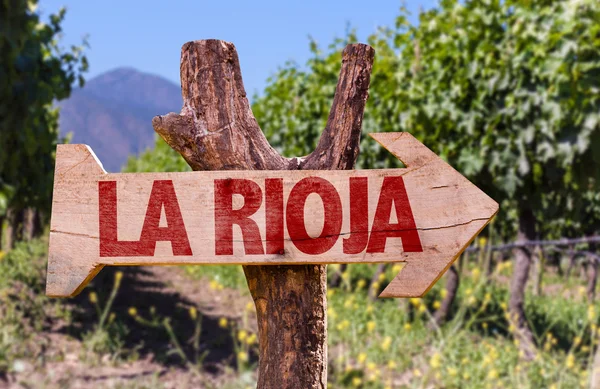
When I started writing about wine, in the early 1970s, Rioja was already Spain's iconic red wine. A survey of Denver wine shops then would have disclosed only a few Rioja red wines, and then from a handful of large traditional vintners such as Federico Paternina, CVNE, Marques de Murrieta, Marques de Riscal and Bodegas Campo Viejo.
As interest in wine picked up, starting in the early 1970s, more Rioja wines became available. Today, there are hundreds of bodegas on both sides of the Autopista A68, from the Rioja wine capital city of Haro, southeast past Logrono to Alfaro. It's a scenic highway that passes through sub-zones Rioja Alavesa, Rioja Alta and Rioja Oriental (formerly Rioja Baja).
The wine, food and culture centers follow the Ebro river through Rioja. In a distance of only 60 miles, you'll find Logrono and Haro in Rioja Alta, Laguardia at the center of Rioja Alavesa, and Alfaro, Calahora and Arnedo the main cities in the sprawling Rioja Oriental.
There are more than 600 wineries in Rioja, from small family-owned vintners in Rioja Alavesa to large cooperatives and wine companies in Rioja Oriental. Grower/winery relationships in Rioja are like those in Champagne, where a large number of independent growers sell grapes to wineries, rather than a winery growing its own grapes.
Technical Rioja
Spanish wine is regulated by the Denominacion de Origen (DO) system, similar to the French AOC system of rules regulating the growing and production of wine. It's a lot of acronyms to remember, but a working knowledge will help in making a more informed buying decision.
Although DO is still widely used, the official designation is now DOP, Denominacion de Origen Protegida, (Protected), a mouthful for non-Spanish speakers that falls in line with the EU's Protected Designation of Origin.
Additionally, a change to Spanish wine law has added Vino Municipio (single village) and Vineado Singular (single vineyard), terms that may be used on wine labels. In 1991 Rioja was the first Spanish region to be awarded DOCa, Denominacion de Origen Calificada, (Qualified) for wines that meet higher standards than are spelled out under DO/DOP.
These are the key points of the three sub regions and the wines:
Rioja Alavesa, the smallest of the three sub-regions. Alavesa and Rioja Alta are thought to make the highest quality red wines. Vineyards in the northwest of Alavesa are up to 4,000 ft., higher than any in Rioja. The elevation, and being closer to the Mediterranean, brings cool breezes to the vineyards, that are around the towns of Haro and Laguardia. Red grapes: Tempranillo, Mazuelo, Garnacha, Graciano. And Viura (Macabeo) for white. Prominent Alavesa wineries include Marques de Riscal, CVNE, Bodegas Faustino, Bodegas El Coto.
| Laguardia, Rioja Alavesa |
Rioja Alta is the westernmost of the three sub regions. The vineyards, mostly south of the Ebro river are lower than in Rioja Alavesa. Although red wines from both Alta and Alavesa have their advocates, both produce quality reds, with, arguably, the edge going to Rioja Alavesa. Generally, Alta wines are lighter in body, with lower acidity. The grape mix is the same as in Alavesa, leaning heavily on Tempranillo. Rioja Alta wineries: Bodegas Muga, La Rioja Alta, Bodegas Marques de Murrietta, Marques de Caceres.
Rioja Oriental, until 1968 known as Rioja Baja, is in the eastern broader part of the valley. Oriental is warmer, except for sections around Alfaro. The climate and fertile soils are right for growing Garnacha. In recent years, though, Tempranillo began to replace Garnacha, but now, with winemakers finding new potential in Garnacha, the pendulum is swinging back. There's less limestone and more clay than in Alta vineyards. Rioja Oriental wineries: Bodegas D. Mateos, Bodegas Ontanon, Palacios Remondo, Bodegas Vinicola Real.
Rioja Grapes and Tasting
There are two main grapes in Rioja red wine: Tempranillo and Garnacha. Tempranillo is native to Spain, while Garnacha (aka, Grenache), is popular in Rioja Oriental and is equally at home in Priorat, Spain's most distinctive and expensive red wine. Different expressions of Tempranillo can also be found in Ribera del Duero, Catalonia, Navarra, Costers del Segre and Somontano.
In addition to Tempranillo and Garnacha, there are four other authorized grapes: Mazuelo, Graciano, Viura and Macabeo, the latter two grapes are white. Cabernet Sauvignon is also allowed, but only with special permission. Rioja winemakers have found that blending works better with native varieties. Perhaps the practice is a holdover from the late 19th century, when French winemakers settled in Rioja following the destruction of vineyards by phylloxera in Bordeaux.
The following rules apply to Rioja red wines: Crianza, a minimum of 18 months, 12 of which in oak barrels; Reserva, 3 years, 12 months in barrel; Gran Reserva, 3 years ,minimum, 2 in oak and the wine cannot be moved from the winery until the 6th year after the vintage.
The quality of Rioja red wines has come a long way, spurred on by the challenge from Ribera del Duero wines. Rioja Crianza wines are good value choices for summer enjoyment.
Next post: This and That
Contact me at boydvino707@gmail.com



No comments:
Post a Comment
Note: Only a member of this blog may post a comment.